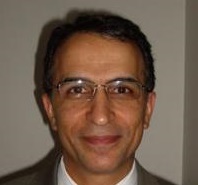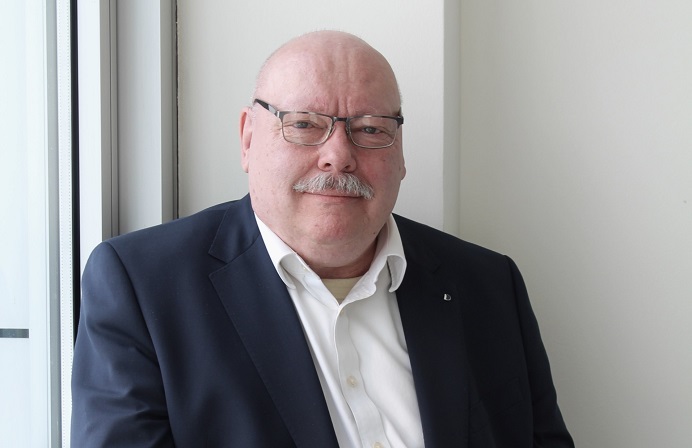
Sharwood: What are the top three IT projects and strategies set to dominate AVIVA’s IT agenda within the next 12 to 18 months?
Hekmat: First one is agile methodology. This is something that we started 5 years ago and have had enormous success with. We’ve steadily become better at practicing agile software development and will continue to invest in it for the foreseeable future. The second priority is the rationalisation and transformation of our key legacy systems, using our in-house capability. We’ve already invested two years of effort in this and delivered benefits such as reduced operational costs, increased capacity, and greater user productivity. But we still have a few more years to go. The third priority is innovation, not just in technical terms, but more so in creative ways of applying technology to our products and services so that we can create new market opportunities. Two current examples of this are: RiskFirst, our online underwriting system, which recently won the Rainmaker ‘Best Innovation of the Year’ award; and n-link, our online adviser desktop system, which has been recognised as having the best online straight through transaction processing capability by Investment Trends for four consecutive years.
Sharwood: How do you define success with regards to technology?
Hekmat: First off, I believe that there is no such thing as bad technology, but only bad applications of it. For any given context, some technologies are superior to others, because they better serve the needs of practitioners. However, you can put the latest and greatest technology in the hands of a mediocre practitioner and get awful results. And this is the point that often gets overlooked – the importance of the human element. I sometimes use this analogy to crystallize the point: which one would you rather listen to – an ordinary violin played by a master (such as Paganini) or a two-million dollar violin played by a novice musician?
So, for me, success has everything to do with how we apply a technology (given all its strengths and limitations) to solve a particular problem. The solution or its success is not something that’s dictated by the technology but is arrived at through the practitioner’s intellectual engagement. The starting point should always be a business problem, not a technology problem. In this context, I would define success as the ability to devise a simple solution that can be realised through the application of commonly-available technologies.
Sharwood: Some of your products have a lifespan of decades, or tens of decades. How do you manage the long-term storage and archive requirements of those products?
Hekmat: I suppose you’re referring to legacy books of business. The long-term storage and archive of the data for these products is not an issue, as they’re all digitally stored and we have a world-class data centre combined with DR and BCP. The challenge is more to do with the maintenance of the admin systems that operate on this data. We review our approach to these systems on an annual basis. We won’t necessarily modernise a system for the sake of it. We only undertake a modernisation project if its business case stacks up in terms of business benefits, risk mitigation, and other compelling reasons. In some cases, the best option is to actually leave the system as is and only apply the ongoing legislative changes to it.
Sharwood: What are your thoughts with regards to SOA? We’re hearing contrasting opinions from CIOs, some of whom support the idea while others are frustrated by what they claim to be ‘vendor hype’. What are your thoughts and how relevant is SOA to AVIVA’s future technology mandate?
Hekmat: My personal view is that SOA is largely hype. Give it another couple of years and the gloss will wear off and you’ll see some other new hype or acronym taking its place. However, this is not to say that the principles that underline SOA are not important – they are – but there is nothing fundamentally new about the concept. SOA is really just a design pattern amongst many others. One should get worried if a vendor claims that it will solve your most pressing problems, because it won’t. Good design is about applying the right tools and concepts to the right situations. Disappointments arise when people confuse tools and concepts with the process of problem solving.
Locally, we use SOA in exactly the capacity I’ve just explained. It’s not a cornerstone of our software architecture strategy; it’s just another concept that we use where we see fit.
Sharwood: As a global organisation, you must feel the pinch of data carriage charges. Do you use WAN optimisation or do carriage costs mean that you decentralise infrastructure?
Hekmat: Our data centre is centralised in Melbourne, so we do have WAN communication overheads. WAN optimisation has helped us increase the communication throughput and speed with our state-based branches. In the scheme of things, however, the data carriage cost has not been a major burden.
Sharwood: Australia seems likely to adopt privacy breach disclosure laws. Do you support their introduction? Will there be a substantial compliance burden associated with such laws?
Hekmat: Being part of the financial services industry, compliance is an important ingredient of our daily life. Many of our systems, processes, and practices have been revised over the years to meet emerging compliance requirements. So, in that sense, we’re very much used to undertaking these changes. The fact is that when new regulations emerge, we’re often one of the very first players to successfully implement them is plain evidence of our agile IT capability.
As for my support or otherwise for privacy breach disclosure laws, I don’t feel qualified in a legal sense to have an informed view on this. I will consult my legal colleagues in due course to assess their relevance and likely implementation overheads.
Sharwood: The majority of superannuation investors are reasonably passive investors. Do you feel it’s necessary to start to create online facilities to attract activist investors or self managed superannuation clients?
Hekmat: Our business model is currently aimed at supporting independent financial advisers. We believe that receiving professional financial advice is in the best interest of consumers. Furthermore, this model has helped us become more competitive – because our products and services are offered through independent channels, they are selected purely based on merit. We like this model as it promotes transparency and fair play. The self-managed superannuation market is not out of step with this model. As for direct offerings aimed at activist investors, this is not something that we’re currently contemplating.
Sharwood: What advice would you offer an aspiring CIO?
Hekmat: First, invest time and energy to develop a good understanding of the market sector of your choice. Sector experience might not be so crucial when you’re in a junior role, but becomes somewhat crucial at senior levels. Cross-sector hiring for CIO roles is much rarer than some might think. In the same vein, long service for a company would improve your chances, as a lot of executive roles are filled through promotion rather than externally. Second, you need to be business savvy. A CIO must offer the organisation more than just running the IT shop. The role requires involvement in setting business strategy, working closel





